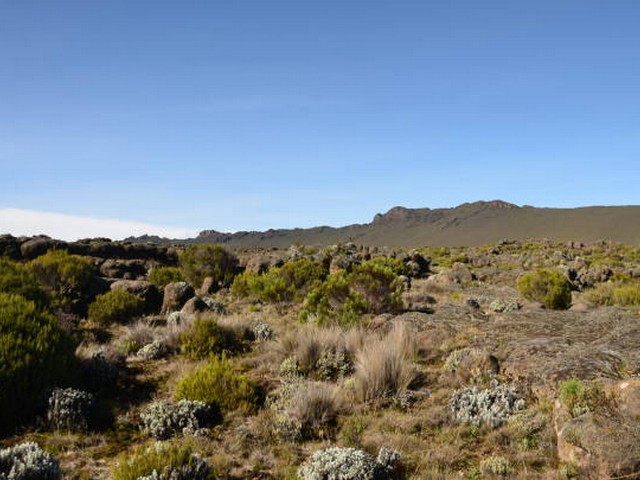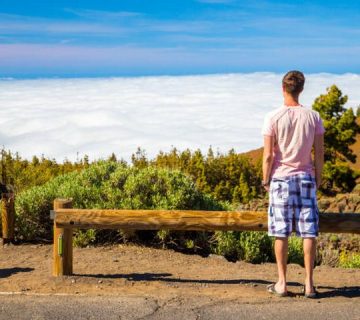Best Month To Climb Kilimanjaro For Clear Views
Welcome to the realm of majestic peaks, where the air is as crisp as the untouched snow caps and the journey is as breathtaking as the destination. If you are pondering when to embark on an awe-inspiring climb up Mount Kilimanjaro, you’ve picked a stellar question. The best month to witness Kilimanjaro in its clearest and most stunning form is not just about favorable weather; it’s about experiencing the mountain in its fullest glory. Here at Kilimanjaro Centre for Trekking and Ecotourism (KCTE), we’ve got all the insights you need to choose the perfect time for your adventure.
Why The Month Matters
Mount Kilimanjaro, the highest peak in Africa, stands regally with its snow-capped summit piercing the blue African sky. It’s a colossal beacon for adventurers worldwide. However, Kilimanjaro’s weather is as vast and varied as the mountain itself, which dramatically affects visibility and your overall trekking experience.
Choosing the right month to climb is paramount to ensure not only clear views but also a safer and more enjoyable journey. Let’s explore the best times to visit, tailored for those who seek crystal clear horizons.
Peak Visibility: January and February
The Dry Advantage
January and February stand out as prime months for clear views on Kilimanjaro. These months are part of Kilimanjaro’s short dry season, offering sunny days and star-studded nights. The lesser cloud cover during this period means uninterrupted views of the spectacular landscapes and possibly the best sunrise views from the summit.
Lesser Crowds
While still popular, these months don’t see the same volume of climbers as the mid-year peak season. This means slightly less crowded trails and more serene moments to connect with nature and snap those perfect, unobstructed photographs of the awe-inspiring terrain.
A Close Second: June to October
Extended Dry Spell
June through October marks the long dry season on Kilimanjaro. This period offers a longer window to plan your climb with an expectation of good weather and clear views. Although occasional short rains can occur in June, they usually clear up quickly.
Wildlife and Full Bloom
Climbing during these months not only promises clear skies but also vibrant scenes of flora and fauna. The landscape is rich with full-bloomed alpine flowers and bustling wildlife, enhancing your trekking experience.
Planning Your Climb: What You Need to Know
Assess Your Fitness Level
While selecting the best month for clear views, also consider your physical readiness. Kilimanjaro is a non-technical climb, but it is physically demanding. Ensure you are well-prepared and possibly engage in preparatory treks.
Gear Up Properly
The right gear can make or break your experience. Ensure you have the appropriate climbing attire for cold weather and protective gear against the sun and wind, which are crucial despite the dry season.
Choose the Right Route
At KCTE, we offer various routes up Kilimanjaro, each with its unique vistas and challenges. From the popular Marangu and Machame routes to the scenic Lemosho and the rugged Rongai, each path offers distinct experiences. Our experts can help you select the route that best matches your adventure spirit and fitness level.
Join Us at KCTE
Why climb with Kilimanjaro Centre For Trekking and Ecotourism (KCTE)? We are not just guides; we are custodians of the mountain’s heritage and your safety. Our expert guides are well-versed in the mountain’s moods and paths and are equipped to offer you a memorable, safe, and enlightening trekking experience.
FAQs
What if I can only travel during the wet season?
While the dry months offer the best visibility, Kilimanjaro is accessible year-round. Our experienced guides at KCTE can navigate the wetter months, ensuring a safe journey with many clear moments interspersed between the rains.
How long does it take to climb Kilimanjaro?
The climb typically takes about 5 to 8 days, depending on the route and your pace. We recommend slower ascents for better acclimatization.
Do I need special training to climb Kilimanjaro?
While specialized mountaineering skills aren’t necessary, physical fitness is crucial. Engage in cardiovascular training, hiking, and possibly altitude training if accessible.
Is there an age limit for climbing Kilimanjaro?
There is no official upper age limit for climbing Kilimanjaro. However, climbers should be in good health. We have successfully guided various age groups to the summit.
Conclusion: The Mountain Awaits
The best month to climb Kilimanjaro for clear views is during its dry seasons, with January and February offering the clearest skies and June to October providing a longer climbing window. Each trek up Kilimanjaro is a journey of personal discovery and awe-inspiring vistas.
Ready to set foot on the roof of Africa with clear, unclouded views stretching before you? Book your climb with Kilimanjaro Centre For Trekking and Ecotourism (KCTE) today. Let us guide you to the summit through the clearest paths, both in the sky and on the trail. The mountain awaits, and so does your adventure of a lifetime!




